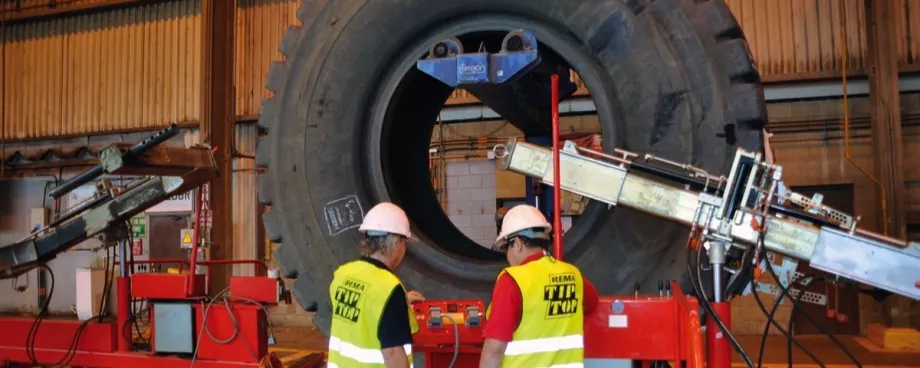(From the archive of ”bulk solids handling", article published in Vol. 34 (2014) No. 5 , ©2014 bulk-online.com)
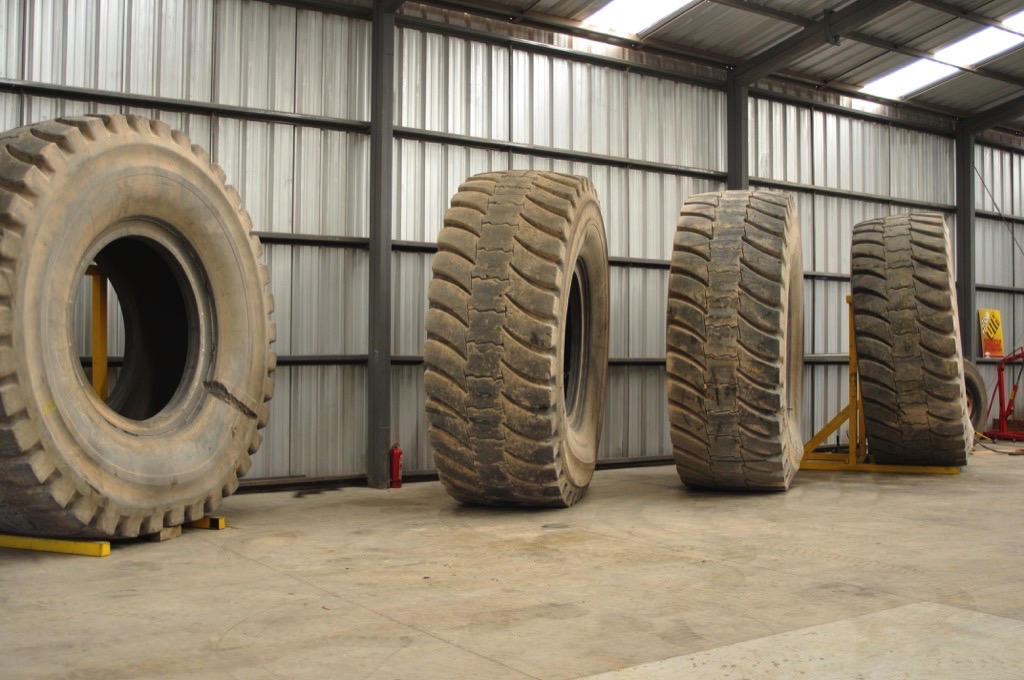
Rough working conditions, dirt roads and huge dumper trucks – all of these are characteristic of open-cast mining. Whether the mines are in Australia, Columbia or Sweden, and no matter whether iron ore or coal is being extracted, immense loads and stresses must be coped with – not only by the workers but also by the vehicles. Although the tires of these gigantic trucks have been specifically designed to cope with the conditions in mines, repairs always figure high on the agenda. The tire repair specialists responsible are supplied with the appropriate equipment, consumables, tools and systems solutions by companies such as Rema Tip Top. This allows repairs to be carried out quickly and reliably and is exactly what the mine operator needs, because the tires have to keep rolling at all times.
In the Mine – Wheels must be turning
Open-cast mines never stop working. Huge vehicles keep rolling round the clock to move the extracted raw materials from A to B. With a load capacity of up to 400 tons, these moving giants contribute heavily to the economic success of the mining company. Tires for such vehicles have a diameter of over 4 meters and weigh up to 6 tons. Depending on the size ad type they can cost around 35 000 Euros, for each one.It is these high costs that make repair rather than replacement so attractive in the mining sector since the repair costs are only between 10 and 15 percent of the price of a new tire. In addition, manufacture of an OTR (off-the-road) tire requires tons of natural rubber, but only a few kilograms are needed for a repair. Repairing the tire makes sound economic sense in any case – assuming the damage is repairable.
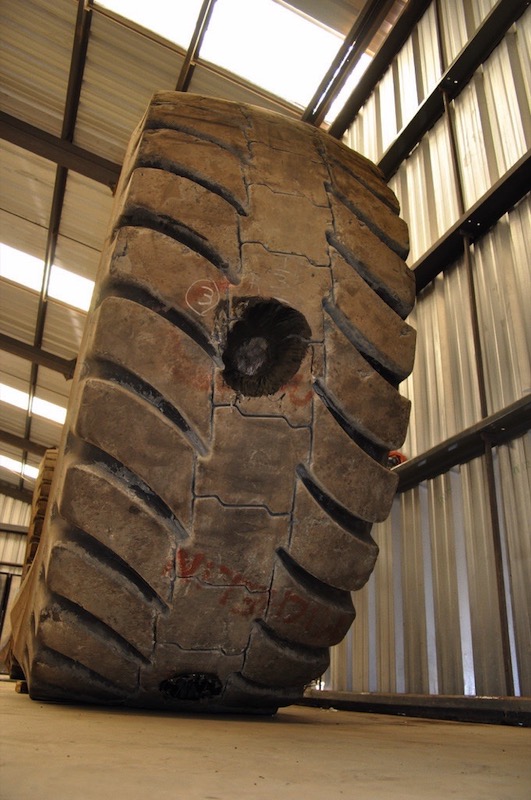
In large-scale mines such as, for example, a coal mine in Hunter Valley in Australia, a total of 200 to 300 damaged OTR tires per month is commonplace. Repairs are often carried out on-site. In some mines, the repair workshops are located directly at the point of extraction. Other mining operators use mobile repair facilities whose workshop may be some distance away, but who respond as needed with mobile equipment for the repair of the damaged tires. Transporting these heavyweights to a local tire service operation only makes sense when this is in the immediate vicinity. But even this takes place quite often..
Running flat – when there is Loss of Air
Damage can generally occur at three different places on the tire – the tread, the tire shoulder and the sidewall. Much of the damage to OTR tires is due to penetration by stones or rock splinters, something that cannot be avoided in spite of taking good care of the road surface. Fist-sized stones that become jammed in the profile work their way through the tread with every revolution, even though the tread may be up to 140 mm thick.When the stone penetrates the carcass it causes a gradual loss of air (slow puncture) that can lead to total destruction of the tire if not noticed. Loss of air is also a certain indication of damage when sidewall or tire shoulder cracks are found. To prevent irreparable damage to the tire, the tires have special sensors fitted that given an early visual and acoustic indication of loss of air or temperatures that are too high.
Repair Process – from Preparation to Vulcanization
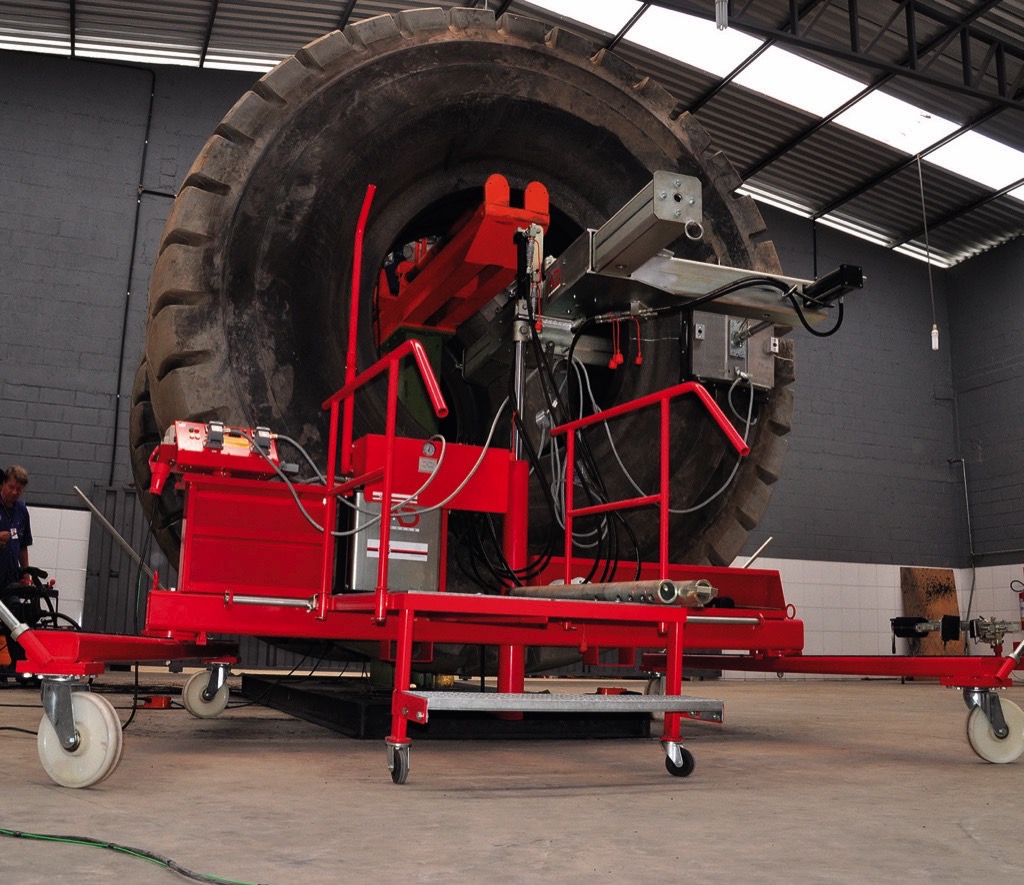
In the first phase, the damaged tire is cleaned, thoroughly inspected and the degree of damage measured. Loose rubber parts or any damaged carcass wires are removed. The damaged area is roughened and the reinforcement patch placed in position. The damaged area is then filled with MTR repair rubber. If the extent of damage to an OTR tire is great, up to 12 kg of filler may be necessary.This is followed by the process of vulcanization in which the filled rubber mixture is vulcanized in a skive. Two different processes are possible: the 1-way or the 2-way system, each having its own advantages and disadvantages. The advantage of the 1-way process is the fast repair time because the damaged area and the strengthening patch are vulcanized in one working step.
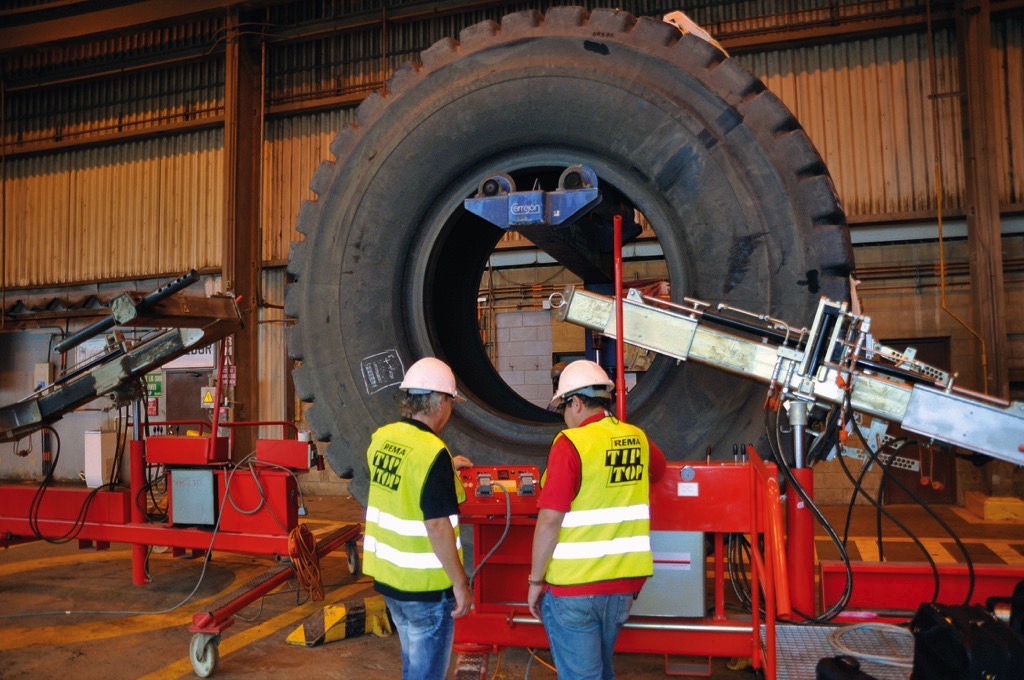
For a tire with sidewall damage this means, for example, that it can again be used after 10 to 12 hours of vulcanization and a 2 to 3 hours cooling-off period. In the 2-way system, in contrast, only the damaged area undergoes hot vulcanization. The reinforcement patch is subsequently cold vulcanized. This process takes longer but is particularly kind to the tire since the heat is only applied to the damaged area.A considerable difference between both processes is, however, the price of the equipment required. The large heating autoclaves and vulcanizing equipment necessary for the 1-way system are considerably more expensive than machines such as Rema Tip Top’s Thermopress used in the 2-way vulcanization process. But what counts most is the final result – and that is equally good for both systems.
Material, Tools etc.
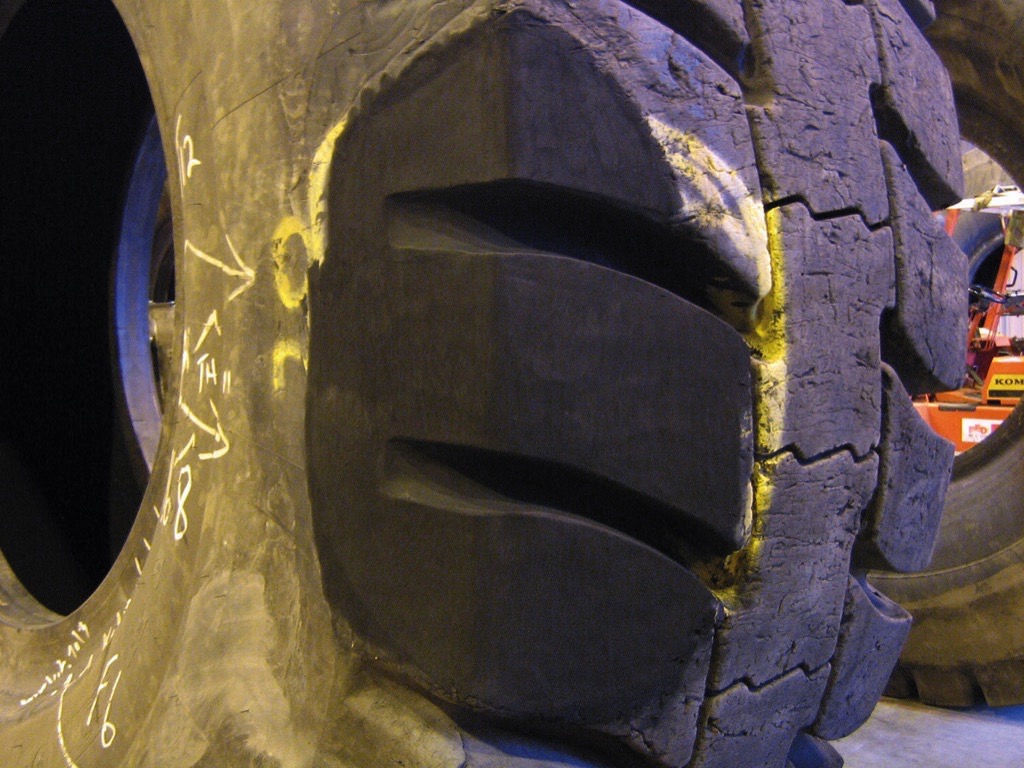
As outlined before, the quality of the tire repair is independent of the chosen process. What is decisive is the complete OTR tire repair system together with its compatible consumables such as reinforcement patches, repair rubber, vulcanizing solutions and tools used for the repair. Rema Tip Top experts regularly visit OTR tire repair workshops throughout the world in order to obtain first-hand information on damage, the work required and the needs of the workshops. This information is the base for the ongoing optimization and extension of the product portfolio.In addition, Rema Tip Top places particular emphasis on carrying out workshop audits and training. This is because only when the repair mechanics are capable of handling the tools and equipment competently can the huge tires of these mining vehicles be repaired professionally and quickly – and at last that is what really counts.
A Note from the Editor
For all statements in this article that refer – directly or indirectly – to the time of publication (for example “new”, “now”, “present”, but also expressions such as “patent pending”), please keep in mind that this article was originally published in 2014.
| About the Author | |
| Ludwig KetzerProduct Group Manager OTR & ASHead of technical ServicesRema Tip Top AG, Germany |
■



